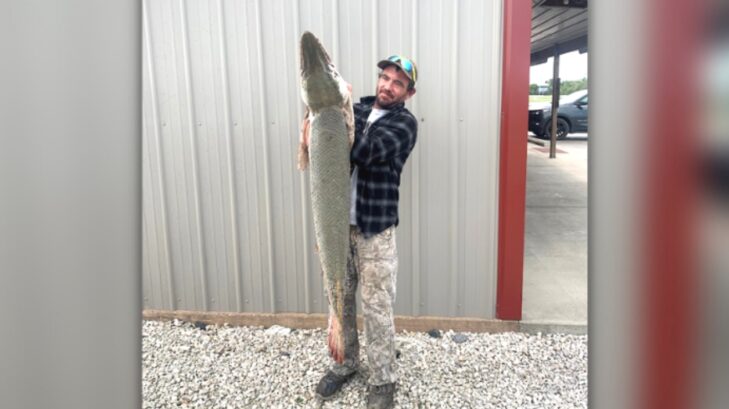According to the Kansas Department of Wildlife and Parks, a local resident reeled in the state’s very first alligator gar ever to be recorded living in the wild.
? What’s this “living fossil” doing in Kansas?
First-ever Alligator Gar Caught in Kansas https://t.co/GqEmE5mDso #kdwpt pic.twitter.com/MvOA7pHy9Y
— Kansas Department of Wildlife & Parks (@TheKDWP) October 12, 2021
The department said that the gar measured over four and a half feet and weighed a hefty 39.5 pounds. They added that it was caught in the Neosho River east of the city of Parsons, however, they don’t believe it got there naturally.
“We’re confident the information from the angler is accurate and the fish was, in fact, caught from the Neosho River,” KDWP Fisheries biologist Connor Ossowski said in a statement. “However, that doesn’t mean the fish originated from the river.”
In order to determine the fish’s origins, KDWP biologists have several techniques. First, they can look for a tag on the fish to see if he was part of a reintroduction effort but they are confident it was not.
“Because most populations of this species can be distinguished from one another with a sample of the fish’s fins, another option we’re considering is genetic identification,” KDWP assistant director of Fisheries research, Jeff Koch said. “This will tell us if the fish came from an existing population in another state.”
If genetic testing does not lead to anything, KDWP Fisheries biologists can do microchemistry by measuring the elemental proportion of a bone on any given fish and comparing it to the elemental concentration of the surrounding water it’s in. This is a technique that will at least tell officials how long the fish has been in the river.
The number one theory on how they believe the fish got there though, is someone must have most likely had it as a pet and released it in the river after it got too big, which is very illegal.
“It’s not unlikely that this fish was once somebody’s pet or purchased from a pet store, and simply released into the river once it became too large,” Doug Nygren, KDWP Fisheries Division director said. “These techniques should allow us to determine which mode of introduction occurred.”
State officials are currently conducting an investigation into the matter and will be releasing a report to their Facebook page as soon as they’re done.



